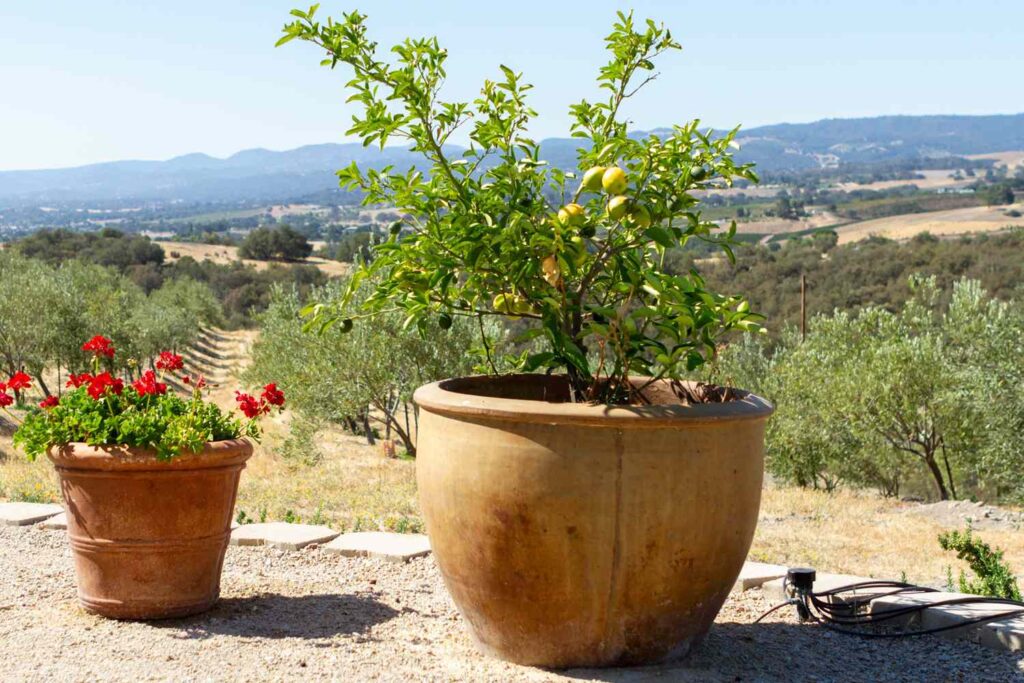
Growing apple trees in pots is an enticing endeavor for both seasoned gardeners and beginners alike. While traditionally associated with sprawling orchards, apple trees can thrive in containers, offering a unique opportunity to enjoy homegrown fruit even in limited spaces. In this comprehensive guide, we explore the possibilities and intricacies of cultivating apple trees in pots, from selecting the right varieties to nurturing them through each growth stage.
I. Introduction
Definition of Growing Apple Trees in Pots Growing apple trees in pots, also known as container gardening, involves cultivating apple trees within confined spaces such as pots, containers, or other suitable vessels. This method allows individuals with limited outdoor space or poor soil conditions to enjoy the beauty and bounty of apple trees.
Benefits of Growing Apple Trees in Pots The practice of growing apple trees in pots offers several advantages, including versatility in placement, ease of maintenance, and the ability to control soil quality and drainage. Additionally, potted apple trees can be moved indoors during inclement weather or cold seasons, extending the growing season and protecting delicate blooms and fruit.
Factors to Consider Before Growing Apple Trees in Pots Before embarking on the journey of growing apple trees in pots, it is essential to consider various factors such as climate, available space, and personal preferences. Understanding these factors can help ensure the success and longevity of your potted apple trees.
II. Selecting the Right Apple Tree Variety
Dwarf and Semi-Dwarf Varieties When choosing apple tree varieties for container gardening, opt for dwarf or semi-dwarf cultivars, which are specifically bred to thrive in limited spaces and require minimal pruning. These compact trees are well-suited for pot culture and often yield abundant harvests despite their smaller stature.
Rootstock Compatibility Ensure compatibility between the selected apple tree variety and its rootstock, as this can influence growth habits, fruit quality, and overall performance in containers. Consult with local nurseries or extension services to identify suitable rootstock options for your chosen apple cultivar.
Climate Considerations Consider your local climate and growing conditions when selecting apple tree varieties for container cultivation. Choose varieties that are well-adapted to your region’s temperature range, chilling requirements, and frost tolerance to maximize success and fruit production.
III. Choosing the Suitable Pot and Soil
Container Size and Material Select large, sturdy containers with ample drainage holes to accommodate the root system of your apple tree and prevent waterlogged soil conditions. Opt for pots made from durable materials such as terracotta, fiberglass, or wood, which provide stability and insulation against temperature fluctuations.
Soil Composition and Drainage Choose a well-draining potting mix specifically formulated for fruit trees or create a custom blend using equal parts loam, compost, and perlite or sand. Avoid heavy or compacted soils that can impede root growth and drainage, leading to waterlogging and root rot.
pH and Nutrient Requirements Test the pH level of your potting mix and adjust it to the slightly acidic range of 6.0 to 6.5, which is optimal for apple tree growth and nutrient uptake. Incorporate organic fertilizers or slow-release fertilizers into the soil to provide essential nutrients throughout the growing season.
IV. Planting and Care Tips for Apple Trees in Pots
Planting Technique and Positioning When planting apple trees in pots, position the tree centrally within the container, ensuring that the graft union is above the soil line. Backfill the pot with soil, gently firming it around the roots, and water thoroughly to settle the soil and eliminate air pockets.
Watering and Fertilization Schedule Maintain consistent moisture levels by watering your potted apple tree regularly, especially during hot and dry periods. Apply a balanced liquid fertilizer every 4 to 6 weeks during the growing season to support vigorous growth and fruit development.
Pruning and Disease Management Prune your potted apple tree annually during the dormant season to remove dead, damaged, or crossing branches and promote an open, balanced canopy. Monitor the tree for signs of pests and diseases, such as aphids, powdery mildew, or apple scab, and take prompt action to prevent infestations and infections.
V. Harvesting and Maintenance
Fruit Development and Ripening Monitor your potted apple tree closely as the fruit develops, noting changes in color, size, and firmness. Harvest ripe apples when they reach full coloration and firmness, twisting them gently from the stem to avoid damage to the fruit and tree.
Pest Control Measures Implement preventive measures such as pruning, sanitation, and cultural practices to minimize pest and disease pressure on your potted apple tree. Use organic insecticidal soaps or horticultural oils to manage common pests such as aphids, spider mites, or codling moths without harming beneficial insects or pollinators.
Winter Protection and Storage Prepare your potted apple tree for winter by moving it to a sheltered location away from harsh winds and freezing temperatures. Mulch the soil surface to insulate the roots and protect them from frost damage, and consider wrapping the container with bubble wrap or burlap for added insulation.
By following these guidelines and best practices, you can successfully grow apple trees in pots and enjoy a bountiful harvest of crisp, juicy fruit right from your doorstep. With proper care and attention, your potted apple tree will thrive for years to come, delighting you with its beauty and productivity.




